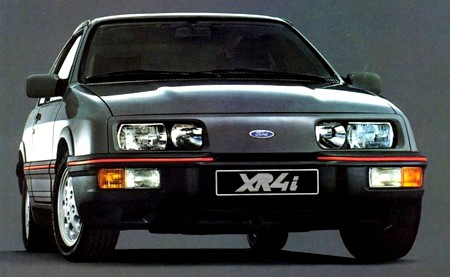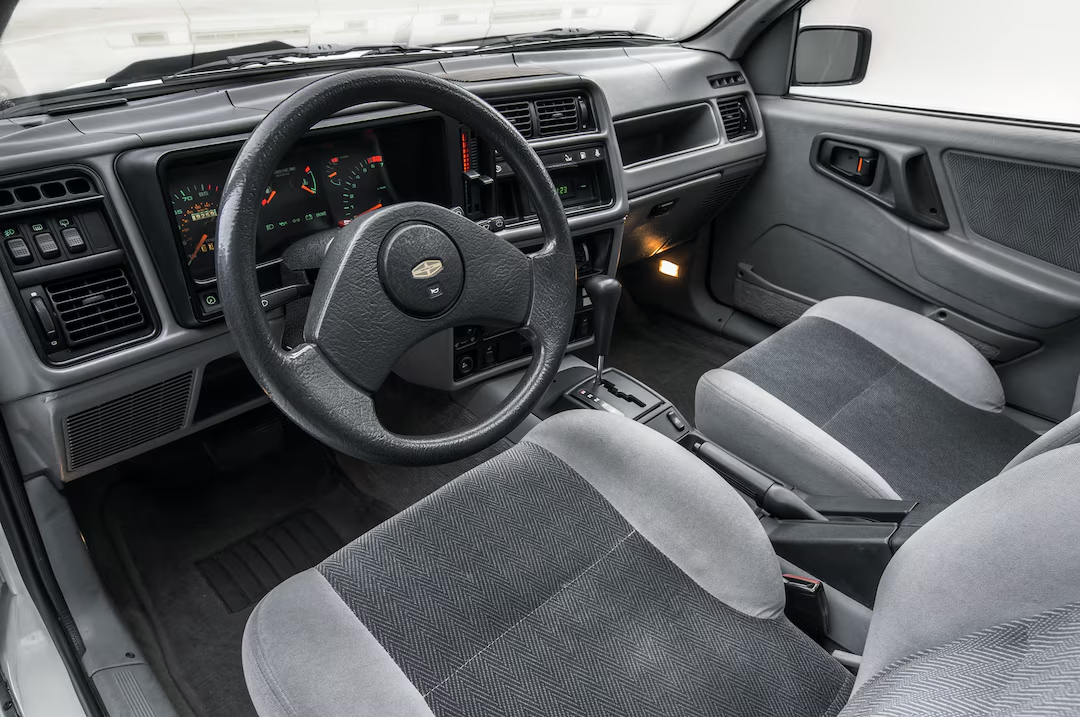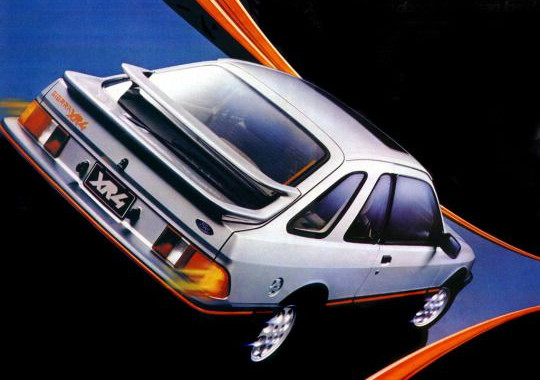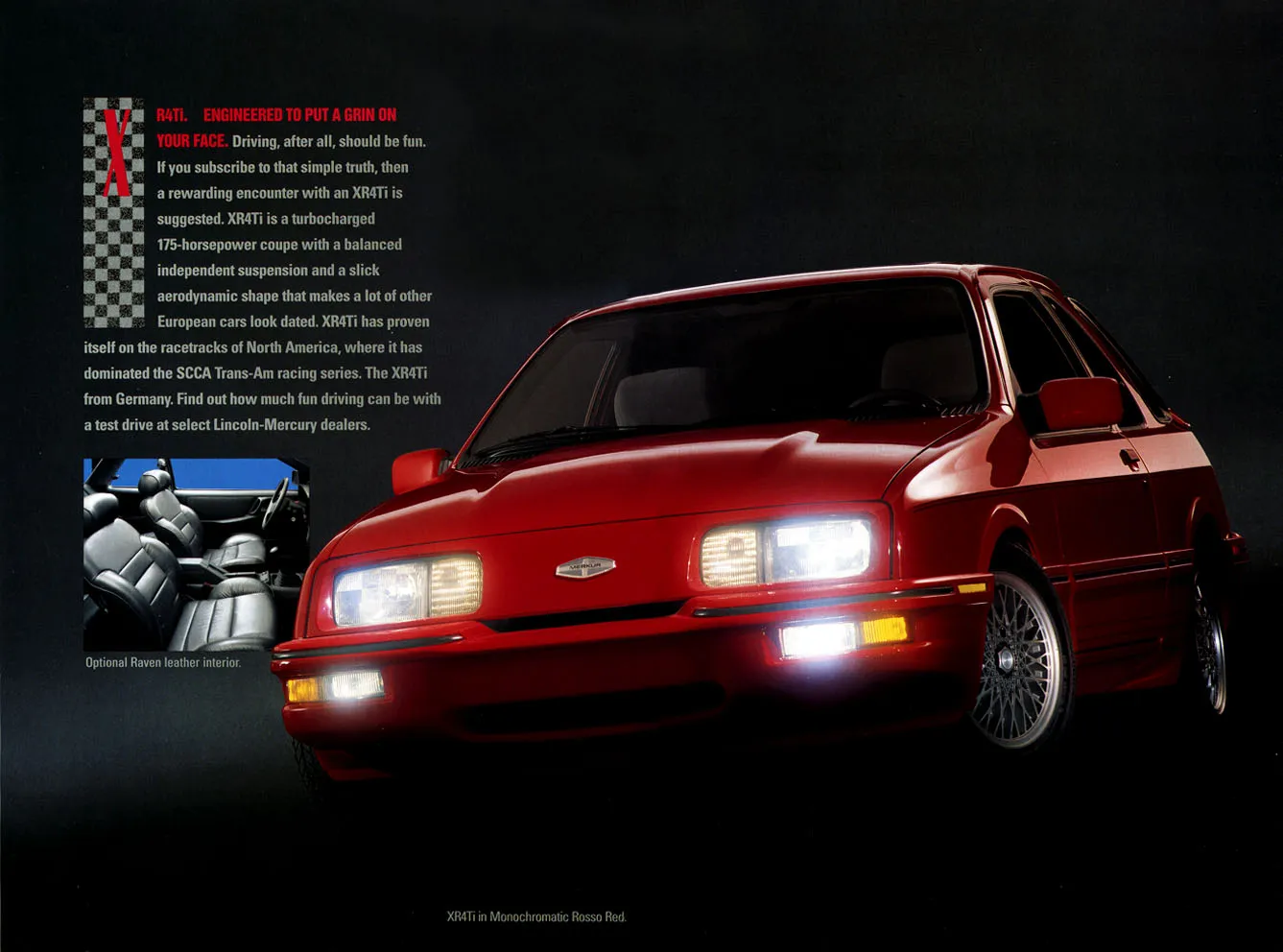Remembering the Merkur XR4Ti – The Quirky Euro-Ford That Stole Our Hearts
- Nathan Ffrey

- Apr 2
- 3 min read
Updated: Apr 3
Ah, the 1980s—a time of big hair, neon colors, and turbocharged hatchbacks that made every drive feel like a scene from an action movie. Among the wild and wonderful cars of the decade, one stands out as a true underappreciated gem: the Merkur XR4Ti. If you grew up lusting after European performance but were stuck on this side of the Atlantic, the XR4Ti was Ford’s way of throwing you a bone. It was a car that mixed German engineering with American muscle and just a pinch of that ’80s eccentricity we all love.
A Little Backstory
In the mid-1980s, Ford wanted to bring some of its European performance magic to the U.S. market. Instead of rebadging an existing Ford model, they created an entirely new brand: Merkur (German for "Mercury"). The XR4Ti was essentially a modified Ford Sierra XR4i, tweaked to meet American regulations and given a punchy turbocharged engine. It was marketed as an upscale European performance car, but in reality, it was more of a turbocharged rebel that refused to conform to the status quo.

Under the Hood – The Heart of the Beast
What made the Merkur XR4Ti special wasn’t just its looks—it was the turbocharged powerplant lurking beneath the hood. Here’s a quick look at the specs that made this car a pocket rocket:
Engine: 2.3L turbocharged inline-4 (borrowed from the Ford Mustang SVO)
Horsepower: 175 hp (with the 5-speed manual transmission)
Torque: 200 lb-ft
Transmission: 5-speed manual or 3-speed automatic
Drivetrain: Rear-wheel drive
0-60 MPH: Around 7.5 seconds (respectable for its time)
Top Speed: Approximately 130 mph
That 2.3L turbo engine was known for its durability, and with a few mods, you could squeeze even more power out of it. The rear-wheel-drive layout and independent rear suspension made it surprisingly agile, though turbo lag was definitely part of the experience (it’s all about the charm, right?).
Design – Love It or Hate It
You can’t talk about the XR4Ti without mentioning its distinctive styling. The most polarizing feature? That double rear wing. Some loved it, some thought it looked like an afterthought, but one thing’s for sure—it made the Merkur stand out. The overall design was unmistakably European, with a sleek hatchback profile, wraparound rear glass, and a sporty, aerodynamic look that was ahead of its time.
Inside, the Merkur was fairly spartan, but the seats were comfortable, the dash was driver-focused, and the experience was all about the joy of driving. Plus, let’s be honest—those funky European switches and controls gave it an exotic feel compared to the typical American cars of the era.
The Rise and Fall
Despite its potential, the XR4Ti never quite found mainstream success. The Merkur brand was a tough sell to American buyers, who were unfamiliar with its European roots. Dealerships struggled with service and parts availability, and the car’s price tag was a bit steep compared to its domestic rivals. By 1989, Ford pulled the plug on Merkur, and the XR4Ti became a forgotten chapter in performance car history.

The XR4Ti Today – A Cult Classic
While it may have disappeared from showrooms, the Merkur XR4Ti never truly faded away. Today, it enjoys a cult following among enthusiasts who appreciate its unique blend of Euro-flair and turbocharged fun. Finding one in good condition isn’t easy, but if you do, you’ll have a piece of automotive history that turns heads at every Cars & Coffee meet.
So here’s to the Merkur XR4Ti—a car that dared to be different and brought a little European spice to American roads. If you ever get the chance to drive one, do it. Just be prepared for some turbo lag, a few puzzled stares, and a whole lot of nostalgia.
Did you ever own or drive a Merkur XR4Ti? Share your stories in the comments below!












Comments